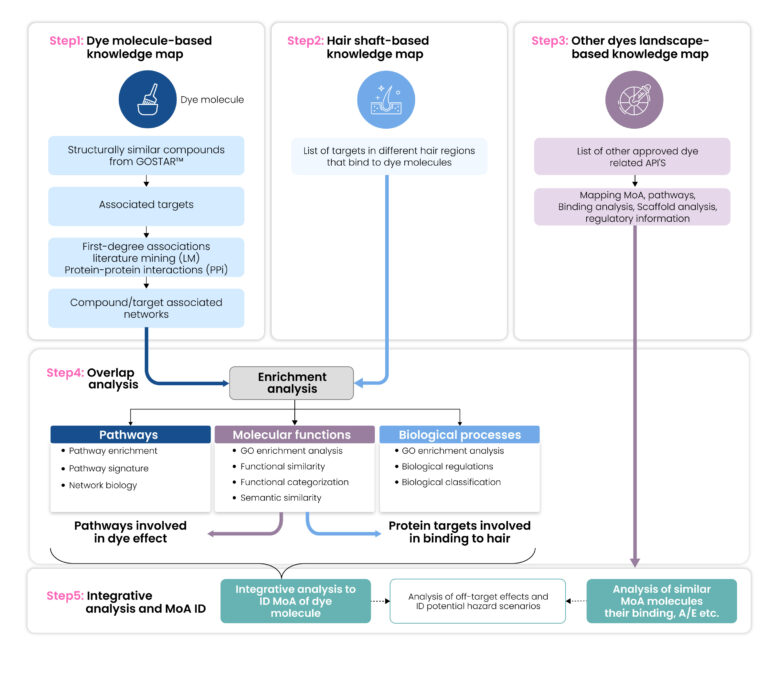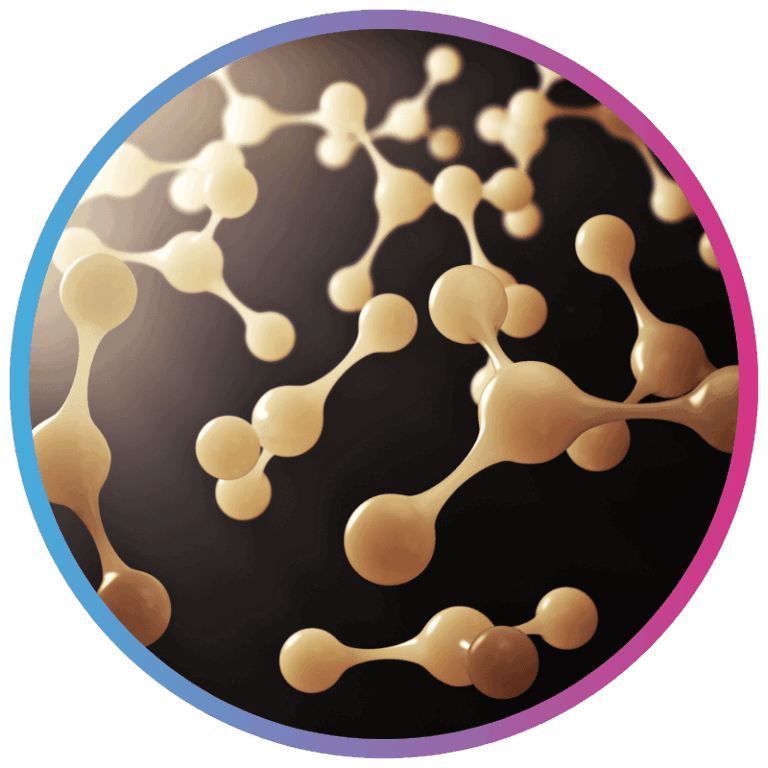Overview
Excelra partnered with a leading agri-food company to deliver biomarker discovery solutions for accurate chicken cell line differentiation. By leveraging computational biology services and advanced data curation, we enabled faster and cost-effective lineage validation compared to whole genome sequencing.Management.

Our client
The R&D division of a multinational European personal care brand, innovating within the cosmetic and haircare industry, with a strong focus on safe, sustainable product development.

Client’s challenge
A leading European consumer products company was in the early R&D phase of developing a next-generation hair dye molecule and needed to understand how the dye binds to hair fibers. This insight was critical to determine its efficacy, safety, and formulation viability. Traditional experimental approaches were time-consuming, and the client required rapid, mechanistic clarity to support a Go/No-Go decision.

Client’s goals
The goal was to use bioinformatics solutions and advanced computational biology to deliver mechanistic clarity into the novel hair dye molecule while reducing time-to-decision and formulation risks.
Our approach
Excelra applied a bioinformatics-powered modular and integrative approach, combining multiple layers of biological data and computational analysis to elucidate the MOA of binding of a hair dye molecule to the hair fibers.
- Step 1: Dye Molecule-Based Knowledge Map: Structurally similar compounds were identified using databases such as GOSTAR™, followed by the determination of their associated biological targets. Literature mining and protein-protein interaction (PPI) data were utilized to uncover related targets and construct compound-target interaction networks.
- Step 2: Hair Shaft-Based Knowledge Map: A list of biological targets (e.g., proteins or binding sites) present in different regions of the hair shaft that bind to dye molecules was compiled.
- Step 3: Other Dyes Landscape-Based Knowledge Map: Mechanisms of action (MoA), pathways, binding profiles, and scaffold structures of other approved dye-related active pharmaceutical ingredients (APIs) were mapped. Additionally, relevant regulatory information was reviewed.
- Step 4: Overlap and Enrichment Analysis: Targets identified from dye molecules, hair-binding data, and other dyes were compared through overlap analysis. Enrichment analyses were conducted to identify significantly involved pathways, molecular functions, and biological processes, utilizing methods such as Gene Ontology (GO) enrichment, network biology, and functional similarity assessments.
- Step 5: Integrative Analysis and MoA Identification: An integrative computational biology approach was employed to determine the mechanism of action (MoA) of the dye molecule, predict potential off-target effects, assess hazard scenarios (e.g., toxicity or adverse effects), and compare with other molecules sharing similar MoAs to derive insights into safety and efficacy.

Our solution
Excelra delivered a comprehensive, multi-dimensional mechanism-of-action (MoA) model that provided the client with deep mechanistic insights into the interaction of their novel hair dye molecule with hair fibers. This data-driven solution directly addressed key challenges faced in hair dye development—such as uncertain molecular interactions, potential toxicity, and long formulation timelines—through a modular, integrative bioinformatics solution.
Key outcomes included:
- Mechanistic Clarity at Molecular Level: Developed a detailed interaction model of the hair dye molecule with specific regions and targets of the hair shaft, offering clear hypotheses to guide formulation design.
- Predictive Safety & Efficacy Insights: Identified critical pathways, potential off-target effects, and hazard scenarios using network biology and enrichment analytics—enabling early risk mitigation and regulatory foresight.
- Targeted Experimental Design: Proposed specific preclinical models aligned with the predicted MoA, significantly reducing the need for broad, trial-and-error experimentation.
- Strategic Knowledge Mapping: Compared the dye candidate against known scaffolds and regulatory-approved dyes to benchmark safety, performance, and innovation potential.
For related work, explore our computational biology services and scientific data management solutions.

Conclusion
Hair dye development is often slowed by limited understanding of molecular interactions, safety uncertainties, and evolving regulatory landscapes. Excelra’s AI- and bioinformatics solutions effectively addressed these pain points, delivering a mechanistic model that empowered the client to make a data-driven Go/No-Go decision 2–3x faster than traditional experimental methods.
By predicting biological behavior, safety risks, and efficacy indicators early in development, our computational biology approach reduced projected R&D costs by up to 30%, minimized downstream formulation risks, and accelerated time-to-market by several months.
This science-backed framework not only improved confidence in the hair dye molecule’s viability but also enabled smarter resource allocation, faster innovation cycles, and stronger ROI on early-stage research. Ultimately, it positioned the client to lead with a safer, more effective, and regulatory-aligned hair dye product in a highly competitive personal care market.
For a related example of data-driven decision-making, see our competitive landscape case study.
Please fill the form
"*" indicates required fields
This will close in 0 seconds
GOSTAR™ SAR Databases - Popupbox
What data do you need?
We'd love to hear from you! Please fill out the form and we'll get back to you as soon as possible.
"*" indicates required fields
This will close in 0 seconds
GOSTAR™ Small Molecules
Request for demo - GOSTAR™ Small Molecule
We'd love to hear from you! Please fill out the form and we'll get back to you as soon as possible.
"*" indicates required fields
This will close in 0 seconds
GOSTAR™ TPD
Request for demo - GOSTAR™ TPD
We'd love to hear from you! Please fill out the form and we'll get back to you as soon as possible.
"*" indicates required fields
This will close in 0 seconds
GOSTAR™ Large Molecules
Let's Connect - GOSTAR™ Large Molecules
We'd love to hear from you! Please fill out the form and we'll get back to you as soon as possible.
"*" indicates required fields
This will close in 0 seconds
BioVisualizer
Thank you for showing interest in the BioVisualizer™
Please help us with the following details, and you will receive the access to the platform on your email
"*" indicates required fields
This will close in 0 seconds
Download Whitepaper
Download Whitepaper
We'd love to hear you liked the whitepaper! Please fill out the form and we'll mail you direct to your inbox.
"*" indicates required fields
This will close in 0 seconds
Online Pipeline Platform
Online Pipeline Platform (OP2)
We'd love to hear from you! Please fill out the form and we'll get back to you as soon as possible.
"*" indicates required fields
This will close in 0 seconds
jobSeniorConsultantLifeScienceInformatics
This will close in 20 seconds
